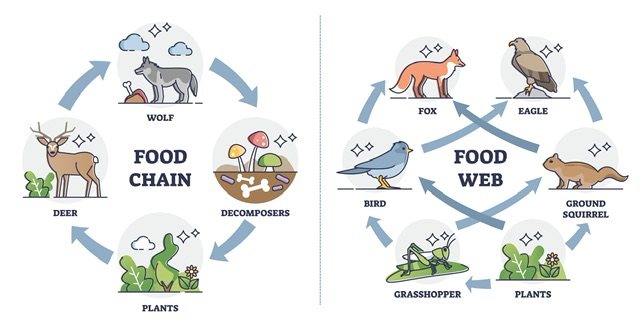We'll be back in a bit !
The system is currently undergoing a routine upgrade to ensure you get the best learning experience. The maintenance is expected to continue till 8:00 pm. Please check back later.
Thank you for your understanding!

In every ecosystem, there is a constant exchange of energy. The energy is transferred from one organism to another through the food chain. The law of energy transfer plays a vital role in the functioning of the ecosystem. It ensures that all living organisms receive the required amount of energy to survive. This article will explore the significance of the law of energy transfer in an ecosystem, the role of producers, consumers, and decomposers in the energy transfer process, the food chain and the flow of energy, and the impact of human activity on the law of energy transfer in an ecosystem.
The law of energy transfer is based on the principle that energy cannot be created or destroyed but can only be transferred from one form to another. In an ecosystem, the law of energy transfer ensures that energy is transferred from one organism to another in a continuous cycle. This cycle begins with the sun, which provides the primary source of energy for all living organisms.
Producers at the top of the food chain include plants and algae. By the process of photosynthesis, they are able to transform solar energy into organic matter. The other creatures in the environment utilize this organic material as food after that. Producers are essential to the energy transmission process because they transform solar energy into a form that can be used.
Food chain Vs Food Web
Organisms that devour other species for energy are called consumers. In an ecosystem, there are three different categories of consumers: herbivores, carnivores, and omnivores. Carnivores exclusively eat other animals, whereas herbivores only eat vegetation. Animals and vegetation are both consumed by omnivores. Since consumers move energy from one creature to another, they are essential to the energy transfer process.
The food chain is a sequence of organisms in an ecosystem, each of which serves as a source of food for the next. The food chain starts with the producers, followed by the herbivores, then the carnivores, and finally the top predator. The flow of energy in an ecosystem follows the food chain. The energy from the sun is transferred to the producers, which are then consumed by the herbivores. The herbivores are consumed by the carnivores, and the carnivores are consumed by the top predator.
Decomposers are organisms that convert decaying organic stuff into more basic substances. These compounds are then recycled back into the ecosystem, providing nutrients for the producers. Decomposers play a crucial role in the ecosystem, as they ensure that the nutrients from dead organisms are recycled back into the ecosystem, providing a constant source of nutrients for the producers.
Human activity has a significant impact on the law of energy transfer in an ecosystem. Activities such as deforestation, pollution, and overfishing can disrupt the delicate balance of the ecosystem, leading to a loss of biodiversity and the collapse of the food chain. Moreover, human activities can result in the introduction of invasive species, which can displace native species and disturb the ecosystem's natural order.
In conclusion, the law of energy transfer plays a significant role in the functioning of the ecosystem. It ensures that all living organisms receive the required amount of energy to survive. Producers, consumers, and decomposers all play a crucial role in the energy transfer process. The food chain and the flow of energy follow a specific pattern in the ecosystem, and any disruption to this pattern can have a significant impact on the entire ecosystem. Human activities can disrupt the law of energy transfer, leading to negative effects on the environment and human society.
To mitigate the negative impacts of human activities on the ecosystem, it is essential to adopt sustainable practices that take into account the law of energy transfer. This includes reducing pollution, conserving natural resources, and promoting biodiversity conservation.
In summary, the law of energy transfer is a fundamental concept in ecology. It is the driving force behind the transfer of energy from one organism to another in the ecosystem. The roles of producers, consumers, and decomposers are all essential in maintaining a healthy ecosystem. The food chain and the flow of energy follow a specific pattern, which can be disrupted by human activities. To ensure a sustainable future, it is important to understand and respect the law of energy transfer in the ecosystem.
The energy transfer efficiency decreases as it moves up the food chain due to various factors such as respiration, digestion, and other metabolic processes. Just 10% of energy is moved from one trophic level to the next, with the remaining 90% being lost as heat.
The energy transfer in an ecosystem is essential for maintaining the balance and stability of the system. It helps in the regulation of population size, nutrient cycling, and biomass production.
In the ecosystem, decomposers break down dead organic matter into simpler compounds, which are then recycled back into the ecosystem, providing nutrients for the producers.
